Two and a half years ago when we first introduced Ryoma Golf’s D-1 driver here at Tourspecgolf, we honestly didn’t know what to expect. We had seen the accolades it had received in Japan as a superior distance driver with unparalleled forgiveness but it was at a price point that we really thought would scare of many potential buyers. Fast forward to today and the Ryoma D-1 became TSG’s best selling driver ever with steady and unmatched sales through 2011 and 2012. While there is certainly no such thing as a driver that performs for every single person, the Ryoma D-1 certainly comes close.
Towards the end of 2012, we began hearing rumors that Ryoma was working on a successor to the D-1 driver. We could not help but wonder how anyone could improve on the D-1. Many customers proclaimed it as the holy grail, longer than any driver they had ever hit with unmatched ease of use. Nevertheless, we quietly waited with unwavering excitement and growing expectations.
We found out a few months ago Ryoma had developed a new D-1 Maxima driver and confirmed its existence when we saw a pre production model at the Japan Golf Fair in February. Ryoma eventually announced a late April release initially in the domestic Japanese market where it has gained a cult like status.
While creating the Maxima, Ryoma decided to create some basic points as a premise for its design and truth be told, these points are all pretty obvious and what we would like in every driver. The Maxima would not only produce big carry or not only produce big run, but an optimal amount of both for maximum driving distance. Every player is different and distance will vary for every player so the Maxima works to improve every golfers game by minimizing left and right ball movement as well as eliminating ballooning of shots by reducing back spin and side spin. Noting that many drivers today reach too high an apex in their ball flight causing the ball to drop rapidly with too much back spin and no run, Ryoma focused on optimal spin for carry and a trajectory apex which would allow a powerful descent angle resulting in great run. Ryoma also understood that with different specs and different shafts, the proportion of carry and run will of course be different with every player but this could be overlooked by making a head that simply produces as much initial ball speeds as possible for every individual player.
So Ryoma focused on the designing a head that would provide as much optimal performance no matter what the shaft and player type. This certainly sounds impossible as we very well know that there is no such thing as a single club that matches every type of player and swing. But the truth is in all my years of testing clubs, recommending clubs to customers and getting feedback from customers, I have never seen any other driver work for such a wide range of golfers like the way the original D-1 did. Obviously there are some players it did not match at all, but that goes for every driver ever made. The bottom line was and is, that Ryoma’s matching rate is higher than any other driver we have ever sold at TSG.
One of the reasons for Ryoma’s success is its ability to eliminate mistakes. Sure the measure of a great driver is how far it can hit the ball and the Ryoma D-1 and now the Ryoma Maxima hit it as long if not longer than any driver out there. But the measure of a LEGENDARY driver is one that not only hits it further than everyone else, but one that makes you a better golfer. Golf is about consistency and reducing mistakes. Some of us make more mistakes than others (nobody not even pros are perfect) and no matter what our playing level is, we strive for more consistency equaling better scores and more enjoyment of the difficult game of golf. What good is a driver if it hits it super long but can’t stay straight, or if you miss that sweet spot it drops 50% in distance. You don’t necessarily want the driver that hits it super long but right into the woods or left into the lake. You want it super long and in the fairway and still super long when you are not striking the ball well or are missing the sweet spot. This is where the original D-1 excelled and now has been improved upon by the new Maxima.
So what makes the Maxima special and how has it changed from the original D-1? Lets take a look at some of its technologies followed by some comparisons and my impressions.
We have the return of the MONOCOQUE body with the new Maxima with some slight tweaks over the original D-1. For those of you who need a refresher, Monocoque is a construction technique that supports structural load by using an object’s exterior to creates a high strength unibody or frame. This technique is also used in aircraft design. More than 90% of the D-1’s body walls are only 0.35mm thick which by industry standards is pretty much nearly half the thickness of most drivers on the market today. As far as I know there is still no driver in golf that features walls all around the driver body that are this thin. There has been a lot of discussion on body design and whether a driver body should be rigid or more flexible. Ryoma decided to design the Maxima body with more elasticity especially in the crown and sole sections which they respectively call the spring crown and spring sole. Once again they use what they call DSI or Deep Strong Impact which features a huge 60g power booster weight at the back of the head but this time balanced with a 12g weight at the leading edge of the face which they call a low spin control unit.
When the golf ball strikes the face of the Maxima, the inertial energy from the impact is repelled by the inertial energy from the power booster causing both the spring crown and spring sole to flex. This creates what Ryoma calls the worlds thinnest Spring Body driver head which in turn creates more trampoline effect not only from the face of the driver but the entire head as in compresses and then shoots the ball out with increased initial ball speeds even on off center hits. You can see this illustrated in the image above.
There is also a graph that shows the spring head in action. Its hard to edit and convert into English like I have done with most of the graphics here so I will simply explain it. The X axis shows time in seconds (fractions of a second) and the duration during impact of the ball on the face. The red plot is the the energy spring action of the spring crown and the blue plot is the energy spring action of the spring sole. The red arrows spanning left to right is the impact time of the ball on the face of the Maxima. You can see that after the ball impacts the face, the red and blue plots being to rise indicating the compressing of the spring body and the increase in energy. At just under 5/10,000th of a second the spring crown and sole peak and release shooting the ball off the face. The purple shaded area is the spring back affect of the head as the plots on the graph drop down indicating the head de-compressing and releasing back to its original shape and actually beyond its original shape even after the ball has left the face.
The spring body actually absorbs the energy from the ball allowing to “stick” to the face during impact longer than other drivers. What this allows is for more energy to be transferred back to the ball and then that trampoline effect. Ryoma measures this Impact Time by using a super high speed camera capable of capturing a whopping 250,000 frames per second! The chart above shows the Maxima’s impact time to be 5.4/10,000th of a second versus 3 other unnamed drivers. I can only assume since the Maxima is conforming that this number is close or right at the maximum CT or Characteristic Time used by the USGA to measure the amount of time a golf ball stays in contact with the driver face (CT as I have explained before is a component of COR). Higher CT means that the face is more elastic and has more of that trampoline effect. Also in the image above you can see how the same ball compresses more on the Ryoma and the thermal images showing more energy transferred back into the all thanks to the longer time it hangs on the face.
Another one of the changes in the Maxima from the original D-1 besides the new spin control unit, and spring body is the use of a newly designed variable thickness face. The design of the face features a thicker elliptical center braced by ribs or arms extending vertically and horizontally. The thickness and length of these bars extend uniformly in an attempt to duplicate maximum rebound not only in the center of the face but all around it. The actually rigidity of the face also varies and Ryoma provides the range of its face stiffness in gigapascals which is the measurement for measuring the stiffness of any material. I don’t know any other brand that provides the GPa numbers for their driver faces but I thought it was cool to know on the low end of the Maxima face measures Y’M 100GPa and the high end Y’M 138GPa. The new Ti face is hot forged as a cup allowing for those arms to bend evenly and repel the energy back into the monocoque spring body. By creating an even flex through the face, there is less twisting on off center hits keeping ball speeds as high as possible. Thanks to the Power Booster, spring body, and new face, the Maxima has a sweet spot almost 1.5 times the area of the previous D-1 model! In the image above they measured how much of the face area could still produce at least 1.4 smash factor and in comparison with another “latest” driver on the market, the area of the Maxima that was able to provide at least 1.4 smash factor was almost 3 times more than the unnamed driver!
So how do these features translate into performance? Ryoma has put together some data and a visual on how this larger sweet area translates into less distance lost on off center hits. The image above is pretty self explanatory. It shows the Maxima once again compared to another unamed (top brand name) driver using a robot swing tester striking the face at different points.
Ryoma as always tested their new driver with pros and amateurs alike through out Japan before launching the driver. The data above is pretty self explanatory and shows that players see gains using the Maxima no matter what player level they are or what swing speed they have. Increased initial ball speeds, quite a bit less back spin, a huge decrease in side spin all equal not only more distance but also a much tighter shot patter due to straighter all around ball flight. The Maxima even shows an improvement thanks to all its new design features over the original D-1.
When I first received the Maxima I went straight to the driving range, bringing along 5 other drivers including the original D-1 which has been my gamer for almost 2 years. I warmed up with the D-1, then proceeded to hit the other 4 drivers I brought (I will not name them to save face though some of you probably know what they are) and finally hit the Maxima Type D 10.5* with STOCK Regular flex last. My first drive with the Type D was longer than all the other drivers including the original D-1 which is shafted with an aftermarket Crazy (all the other drivers are also using aftermarket shafts). I looked at the Maxima and said to myself “yup this is the one… hello new gamer!”. I proceeded to hit the Maxima more, noting the better feel compared to the original D-1 thanks to the variable thickness face and spring body. I also noted the stronger trajectory and more run. The original D-1 launched high for me, especially the Special Tuning but this 10.5* is perfect. Yesterday I had a round in heavy rain with the Maxima and it was a terrible golf day with my gloves and grips drenched in rain. My clubs would twist in my hands causing very poor shots and a very poor score but the Maxima held its own, even with slippery conditions forcing me to miss the center on quite a few drives, the ball always stayed straight and even in the heavy rain still carried a respectable distance AND even ran a bit on the waterlogged fairways. This was like a torture test and the Ryoma kept the round interesting and the ball in play.
I know that many TSG readers and customers already own the original D-1 and are probably wondering what some of the differences are. I already spoke about several of the new features which the D-1 did not have like the spin control unit, the spring body and the variable thickness cup face so I decided to take a few basic photos today of the Maxima and D-1 side by side.
The Maxima on the left looks to have a bigger face. Its not a lot larger but it looks a lot larger due to the difference in shape. While it is not quite as high as the D-1 it is still on the deep side but it appears to be a little longer heel to toe which widens that sweet spot.
Again the Maxima on the left, the shape is a tad different and longer front to back. With the power booster weight in the back this makes the CG even longer than before. In fact Ryoma boasts that it is in fact the longest CG distance in golf. This long CG length also equals a huge gravity angle which means the head rotates square very quickly to promote a straight to draw ball by helping to square up the head at impact. For the general audience, this type of design is probably a good thing as it reduces slicing which in turn increases overall distance. While a huge gravity angle is not for everyone – say strong aggressive players who hook the ball, getting the right shaft can certainly minimize this though it probably only affected a very small number of people.
From the side view, you not only see the more aerodynamic shape of the Maxima but you also see that the neck/hosel length has changed. I believe this has a big impact on the performance of the head and I’m surprised Ryoma does not really mention it. With the longer and higher hosel of the original D-1, the tip of the shaft is further away from the sole of the driver. This actually softens up shafts and makes the tip more flexible. By making the neck on the Maxima shorter, it reduces the distance of the tip of the shaft from the sole, increasing stability, control and reducing spin caused by a tip too soft. This is a welcome change for players who fear the left side.
The Maxima like the D-1 is available as head only and shafted and in three different models, the Type D, G and V. Unlike the D-1 where the Premia had a different face material, the D G and V all have the same material this time around. The design of each head is EXACTLY the same. According to Ryoma, the feel and forgiveness and distance should be identical however as complete stock clubs, the differences are in shafts, finished length and face angles and head finish.
Type D: Mirror Chrome, Crystal Black Crown – 9.5* 0.5* Closed, 10.5 11.5* 1.0* Closed
Type G: Gold IP, Crystal Black Crown – 9.5* 0.5* Closed, 10.5 11.5* 1.0* Closed
Type V: Black IP, Crystal Black Crown – All lofts feature square face angles
All three models are priced differently due to the different finishes. If a customer cannot decide which model to get in its stock form, the Type D is the all around perfomer and suits probably the widest range of average golfers. The Type G is the long driver model at 46.5″ and is the priciest of the 3 models thanks to a more premium high modulus stock shaft and the gold IP finish. The Type V comes with the heaviest and stiffest stock shafts and a square face angle for the better player and athlete golfer.
The Maxima drivers can be purchased as heads only with weights varying from 189g to 200/201g thanks to the ability now to change a small weight in the back of he head under the power booster. Ryoma added the weight adjustability to avoid hot melting/foaming/gelling of the head to increase weight and which in turn could dull/muffle the feel of the head. The Maxima is very hot feeling at impact and they want to keep it this way, because of this they made the back weight adjustable to compensate for the need for heavier weight.
Lofts available and stock shaft flexes available with those lofts;
Type D: 9.5 (6 Stiff, 5 Stiff) 10.5 (5 Stiff, SR, R) 11.5 (R, R2) 45.25″
Type G: 9.5 (S) 105 (SR, R) 11.5 (R2) 46.5″
Type V: 8.5 9.5 (65S, 55SR) 10.5 (65S, 55SR, 55R) – 8.5* is a special order with stock shaft
So to recap the key differences/improvements over the original D-1 is that the Maxima has the new spin control unit at the front of the head to help reduce back spin. The Maxima now has a spring body and a multibeam variable forged cup face which has a sweet spot 1.5* the original D-1. The Maxima is more stream lined and produces better feel and sound. The Maxima improves launch and carry and run all equaling more distance than the D-1.
Now the bottom line which you probably already know from reading this very long blog. When Ryoma announced they were going to release a successor to the D-1, we all wondered how on earth the D-1 could be improved on. Well Ryoma did just that with the Maxima which improves on the original D-1 in every single way and most importantly in overall performance. Could this be the hottest driver of 2013? Very likely. If you own a original D-1 should you get the Maxima? If you want more distance and even more forgiveness it would be silly not to at least consider it though I am pretty sure many will “upgrade”.
After taking so much time to prepare this blog, I still need to get the listings in the pro shop so people can check out. In the mean time you can already pre order the Maxima for a June shipping by contacting me as instructed in this forum post on pre ordering.
The Ryoma Maxima can also be ordered directly from the pro shop now for the Mid June shipping time!
Ryoma has told me that they will have stock in this June batch for TSG but going forward as demand increases we could see shortages equaling wait times. Because of this I suggest those who must have the Maxima order asap to avoid disappointment!
In the mean time check out Ryoma’s promotional video!


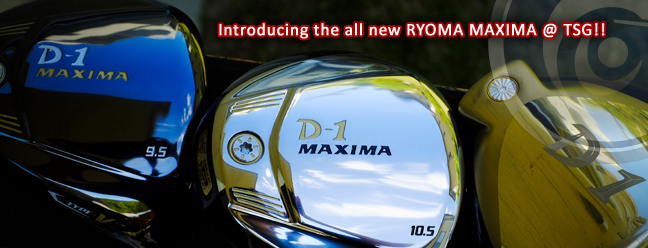
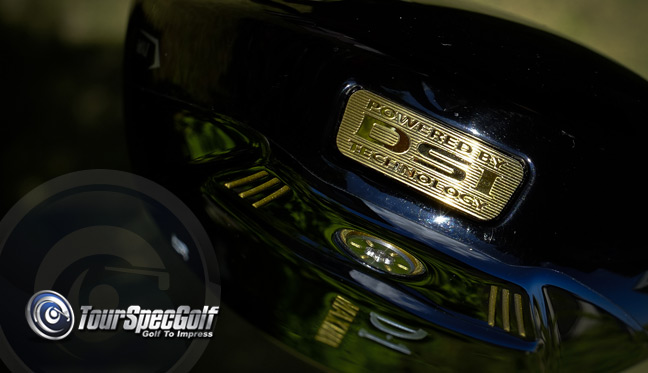
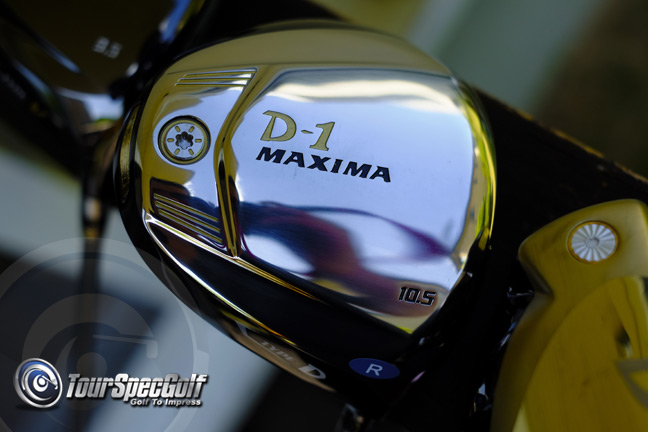

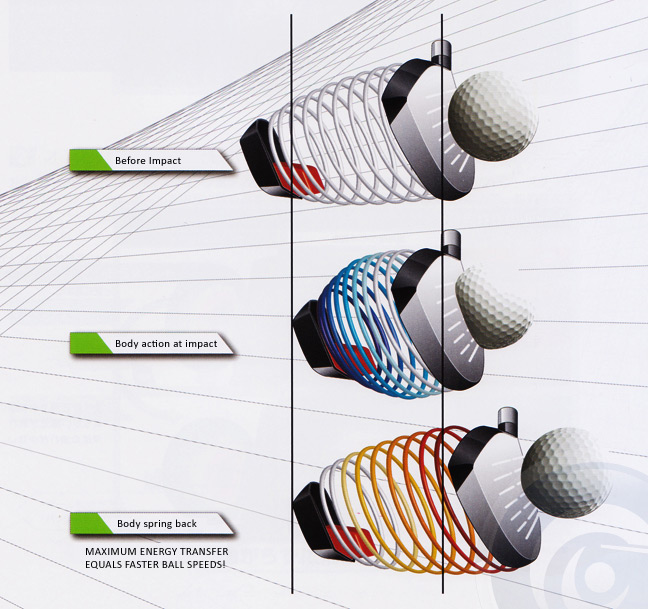
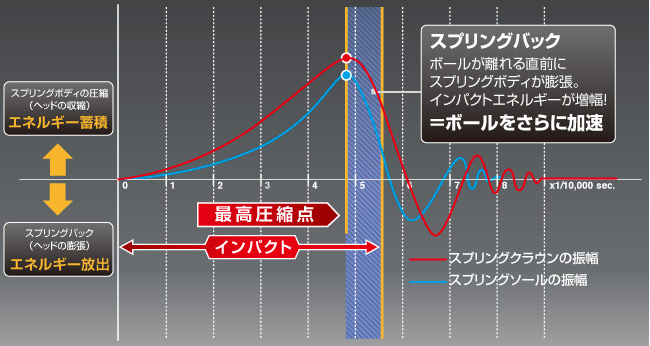
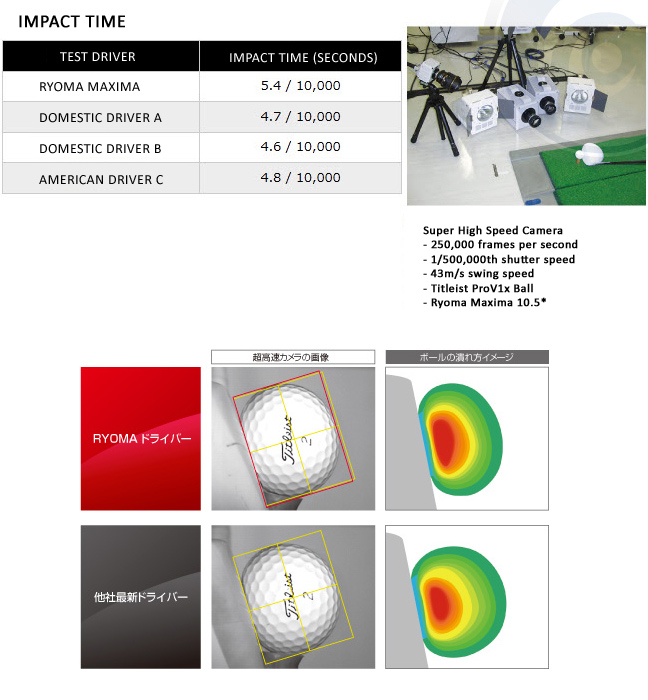
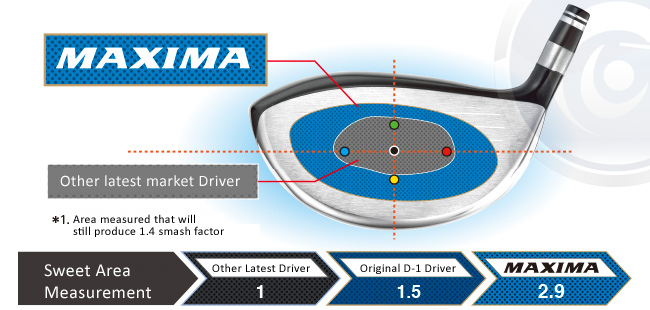
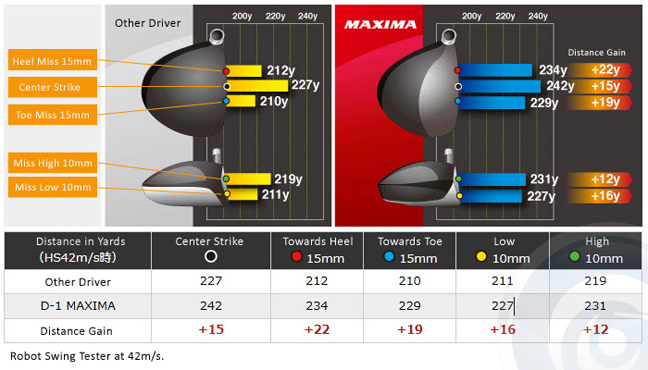
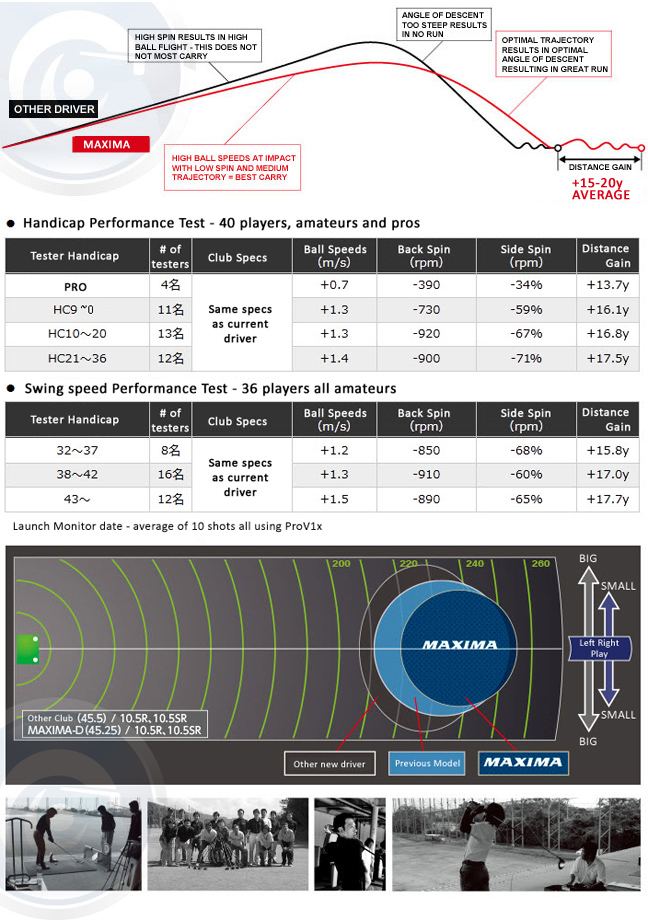
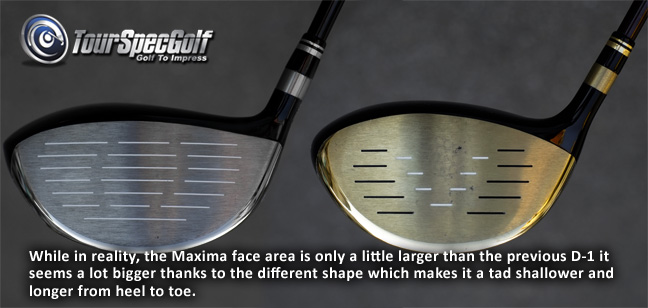
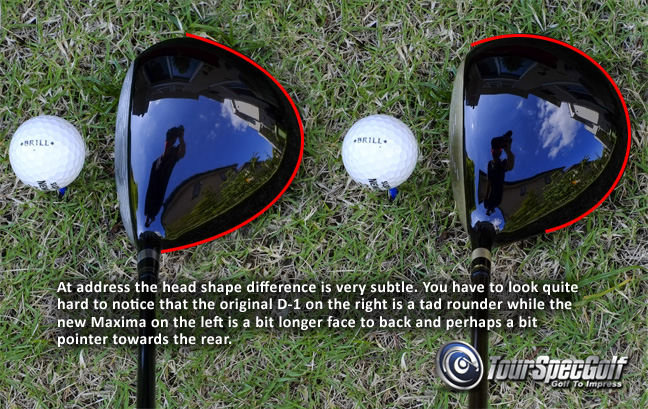
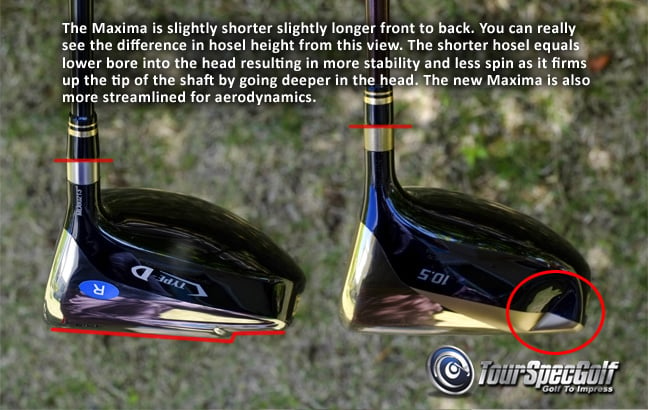
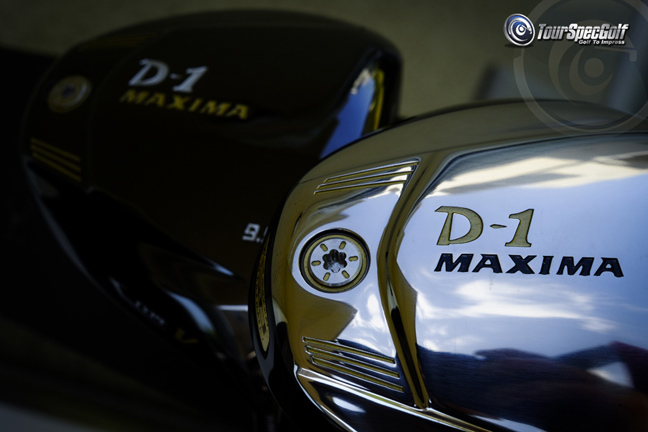










Hi Tario,could you please give me more information on the new D1 Ryoma maxima driver.On a 10.5% loft with 05% closed what shaft would they recomend for a swing speed of around 80mph,also could give me the price for this club. Many thanks Roy.
Hi Tario can you spec out 10.5 in maxima with same shaft and specs I have in my current Ryonma.
Mike D
Dear Tario please send me more info on the new Di Ryoma Maxuma driver in 10.5 spec reg setup with + 0.5-1* closed am know using a Honma S-01 10.5 reg shaft driver 49 grams swing speed 90 I really appreciate the info and price.thanks Mr.Hoover
Hi Tario,
I have 7 customers that uses RYOMA.
May be they want to upgrade to Maxima.
Let me know the best price you can made for head only
Thanks and “CIAO”
Sergio
Sergio drop me an email and I can certainly help you out!
Thanks for the write up. I just ordered mines from the proshop, thanks again!
How do I pre-order the RYOMA MAXIMA Type V: Black IP, Crystal Black Crown – 9.5 Stiff shaft.
1. what’s the price?
2. what shaft is available stock and what is available customer that is tune to this head?
Thanks
I currently use last years model Ryoma D1 and noticeably gained at least 10-15 yards on my home course. Are you saying that I should expect more distance with the Maxima?
Is maxima Type G a conforming driver?
How much and what is the waiting time for a MAXIMA Type D 10.5 R 45.25″ Driver ?
Wait time is about a week. All pricing is in the pro shop http://www.tourspecgolf.com
I will be in Tokyo around 21-22 Dec 2013. How can I buy Ryoma Maxima type G head only 187g?
Is it possible to pick up somewhere in tokyo which can save me 30% tax to ship to Thailand.
Can I buy it in tourspecgolf website and send it to my hotel in Tokyo?
I am in fact thankful to the holder of this web page who has shared this wonderful
paragraph at at this time.
Where do you buy a 10.5 Maxima from?